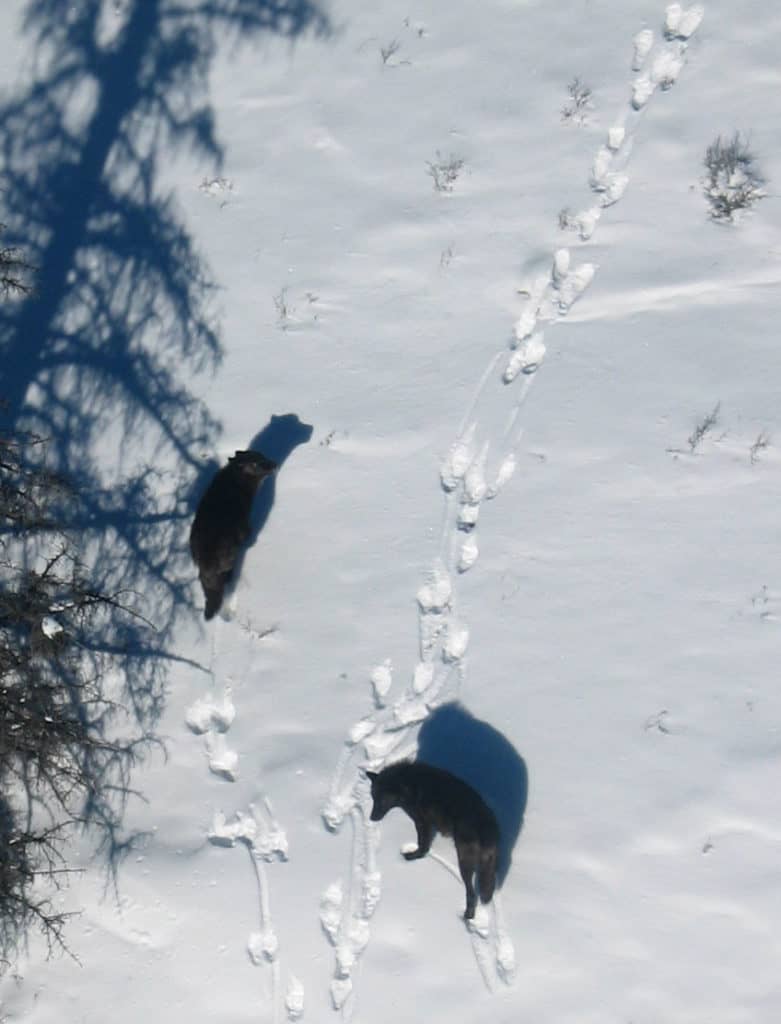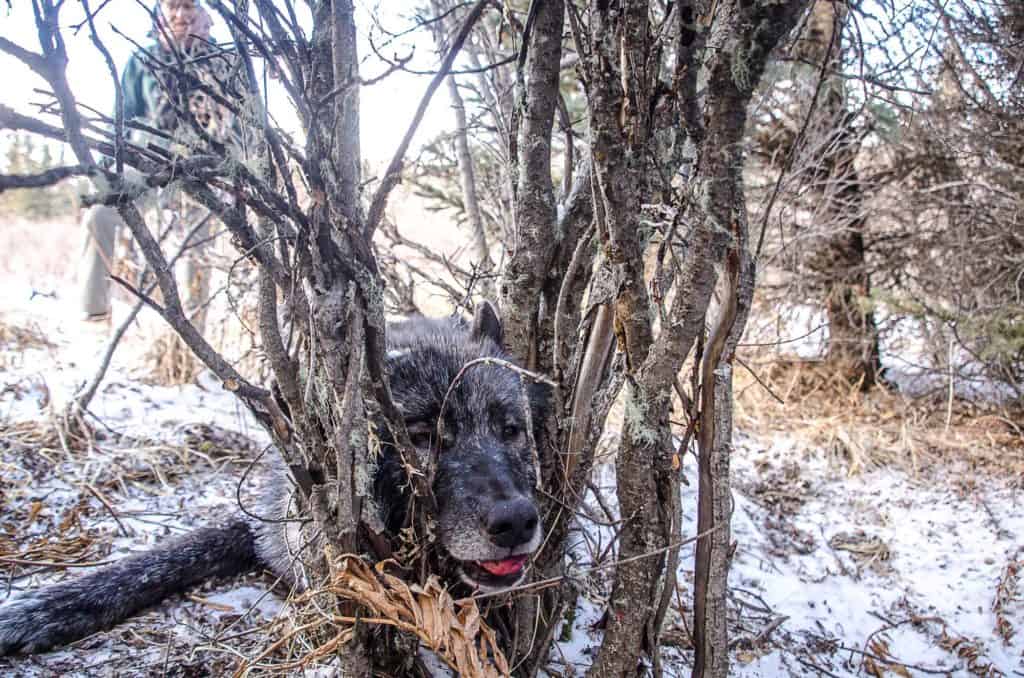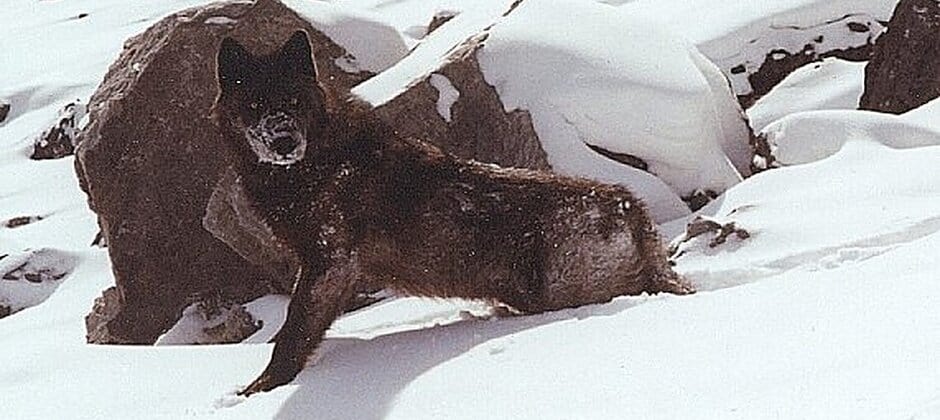Share this article
Wolf sanctuary in Banff stops at the borders
Wolves enjoy a sanctuary in one of Canada’s most iconic national parks, but the area just outside the invisible borders is fraught with danger.
“The park is not effectively protecting any wolves in Banff,” said TWS member Mark Hebblewhite, a wildlife biology professor at the University of Montana and one of the two authors of a study published recently in Global Ecology and Conservation examining three decades of survival of wolves in Banff National Park. “It does raise the question of what it means to be a park.”
Gray wolves (Canis lupus) naturally recolonized the Bow Valley area, part of which is included in Banff National Park, in 1985. Since then, the population has hung on in the area. Researchers have put radio collars on a number of wolves, but over the past three decades they noticed that many of the tracked animals were killed outside the park in areas where hunting is legal.

Wolves in Banff National Park. Credit: Mark Hebblewhite
Hebblewhite and his co-author Jesse Whittington from Banff National Park wanted to take a closer look at wolf survival. They examined records on the canids from 1987 to 2018 on 72 radio-collared individuals and another 28 that were tracked using VHF devices in the early part of the study.
They found that overall survival was 73% per year — a number similar to harvested populations around the world. While it’s illegal to hunt animals in Banff, they are not protected by any regulation just outside park limits. Some hunting and trapping outfits are directly adjacent to park borders, which are not delineated in any way that might indicate to a wolf that things are not safe.
“It’s really driven by a couple of very effective trappers who set up shop right next to the park’s boundaries,” Hebblewhite said. “When [wolves] leave the park they are hammered by trapping and hunting.”
Wolves also die from unnatural deaths inside the park, where they can be hit by traffic on the Trans-Canada Highway that cuts through the Bow Valley alongside a railway where trains also kill wolves.
The study still showed a discrepancy between wolf survival where the park was concerned. Eighty-four percent of wolves that spent the year inside the park survive survived, whereas only 44% of wolves that spent the year outside the park survived. “On average, wolves are more than 6.5 times likely to die when they were outside the park compared to when they were inside the park,” Hebblewhite said.

A radiocollared wolf killed in a trapline just outside of Banff National Park. Credit: K. Heuer
But these borders are only recognized by humans. Hebblewhite said that wolves follow elk (Cervus canadensis) in their yearly migration northeast of the park in winter months, as they likely have for millennia. Most of the wolves that are trapped get caught in this region in December and January.
“The park doesn’t protect a single wolf pack in its entirety over their entire lifespan,” Hebblewhite said.
The issue represents a conflict of interests between the goals of the park and those of hunters — something that can also occurs in national parks in the United States, like Yellowstone. But in Yellowstone and Glacier National Park, where wolves naturally dispersed around the same time they came to nearby Banff, the parks negotiated with state game agencies for hunting quotas on wolves. In Canada, Ontario put a ban on wolf hunting in the townships surrounding Algonquin Provincial Park to protect eastern gray wolves (Canis lupus lycaon) in the region.
“That was required to make sure they weren’t losing these species,” Hebblewhite said.
Alberta, where Banff is located, has no such quotas and few seasonal limits on hunting wolves.
As bison (Bison bison) reintroduction continues in Banff, it may be important to have healthy predators to limit their numbers, which may otherwise get out of control, Hebblewhite said. That would mean large, healthy wolf packs to take them down.
“Banff may be failing in its ability to protect those processes,” Hebblewhite said.
Header Image: A young wolf in Banff National Park. Credit: Mark Hebblewhite








